The United States Armed Forces has some of the most notable and recognizable flags of any military in the world. Altogether, there are six flags, each representing one of the six branches of service. The six branches include the Army, Navy, Air Force, Coast Guard, Marine Corps, and Space Force. Today, we are going to be taking a quick look at the six flags representing each branch of service. Let’s see the different U.S. military flags and learn a little about their origins.
The Six Flags of the U.S. Military
Outside of the individual flags, there is some important symbolism that is associated with the display of the flags themselves, particularly when they are displayed together. In military contexts, the U.S. national flag (the red, white, and blue one) is typically displayed first when multiple flags are displayed together, followed by the flags of the U.S. Army, U.S. Marine Corps, U.S. Navy, U.S. Air Force, U.S. Space Force, and U.S. Coast Guard, in that order from left to right. As such, we have listed them in that order below.
Let’s take a look!
U.S. Army
The flag of the U.S. Army is a white field featuring a blue replica of the War Office Seal. Beneath the seal is a scarlet scroll with the inscription “United States Army” in white letters. Beneath the scroll, the year “1775” is displayed, recognizing the creation of the original Continental Army, with General George Washington as its leader.
The flag was officially adopted on June 12, 1956, by President Dwight D. Eisenhower. It was created through Executive Order 10670, but prior to this, the Army was the only branch of the military without an official flag to represent the service as a whole. The creation of an army flag was spurred by the need for a symbol to represent the U.S. Army alongside the other branches, specifically in joint ceremonies. It was officially requested by Secretary of the Army Wilber M. Brucker.
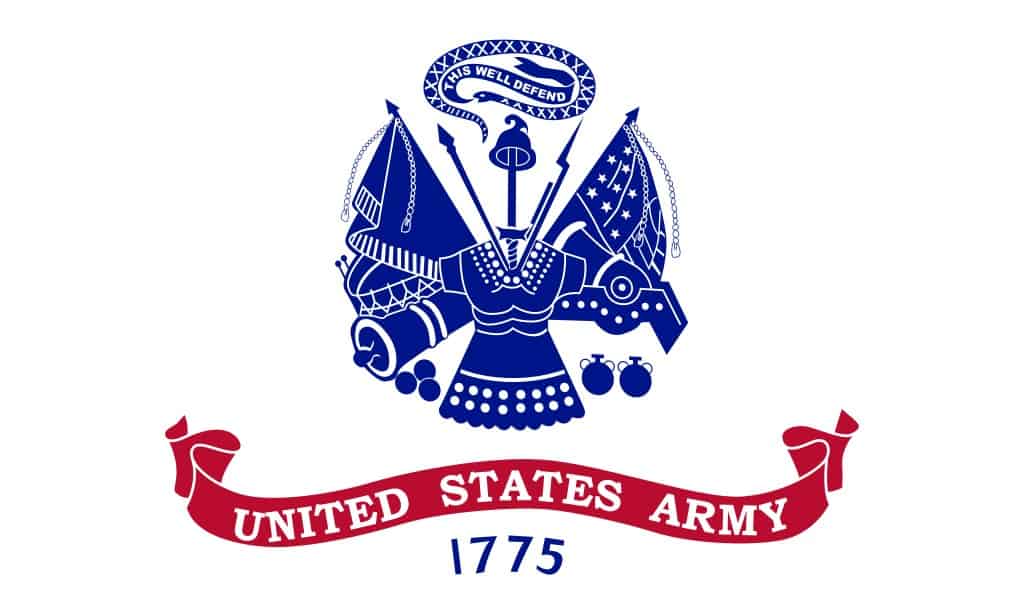
©United States Army, Public domain, via Wikimedia Commons – License
U.S. Marine Corps
The flag of the U.S. Marine Corps is a scarlet field featuring a centered design of an eagle, globe, and anchor. The eagle represents the United States, the globe represents the Corps’ worldwide service, and the anchor represents Marine’s naval tradition. The flag also features a banner beneath the emblem with the words “UNITED STATES MARINE CORPS” in scarlet lettering. The flag’s background and lettering represent the Corps’ official colors, which were established as scarlet and gold in Marine Corps Order 4 in 1925.
The flag was officially adopted on January 18, 1939, and is an important symbol for the Marine Corps and is carried by the Marine Corps Color Guard during ceremonies and parades. It is also displayed at Marine Corps installations and other military facilities around the world.
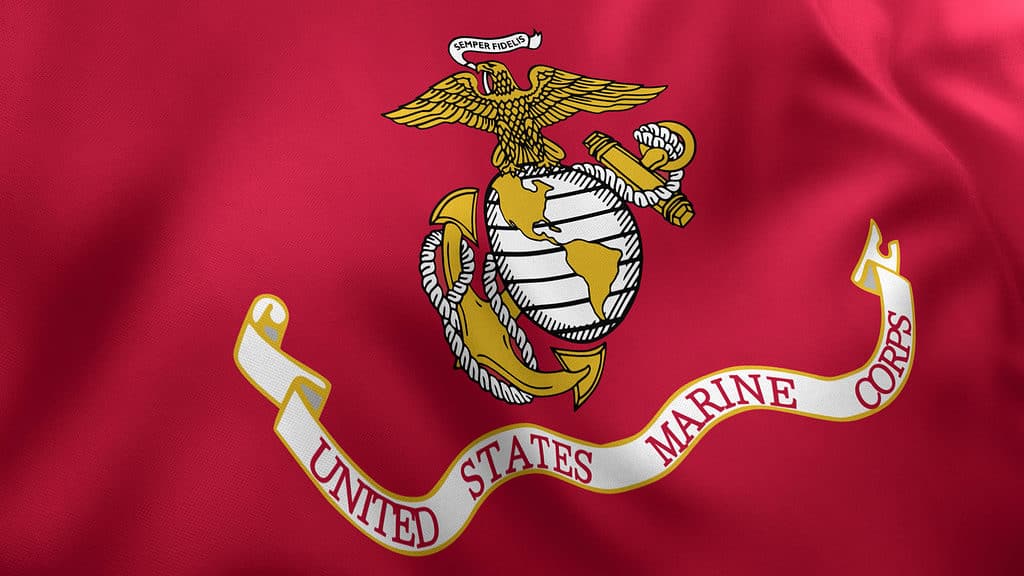
©iStock.com/mirza kadic
U.S. Navy
The flag of the U.S. Navy displays a dark blue field that showcases the Seal of the Department of the Navy in the center. The seal, which features a bald eagle, anchor, and ship, symbolizes the Navy’s role in defending the United States. Below the seal is a vibrant yellow scroll inscribed with the words “United States Navy” in bold dark blue letters. The flag’s dark blue background and lettering represent the Navy’s official colors, and the flag was officially adopted by President Dwight D. Eisenhower on April 24, 1959.
The flag is often displayed on land in offices and during parades and ceremonial occasions and is frequently seen on a staff at the quarterdeck of ships in port. The flag is a powerful symbol for the Navy and is carried by the Navy Color Guard during various ceremonies and parades. It is also displayed at installations and other military facilities globally.
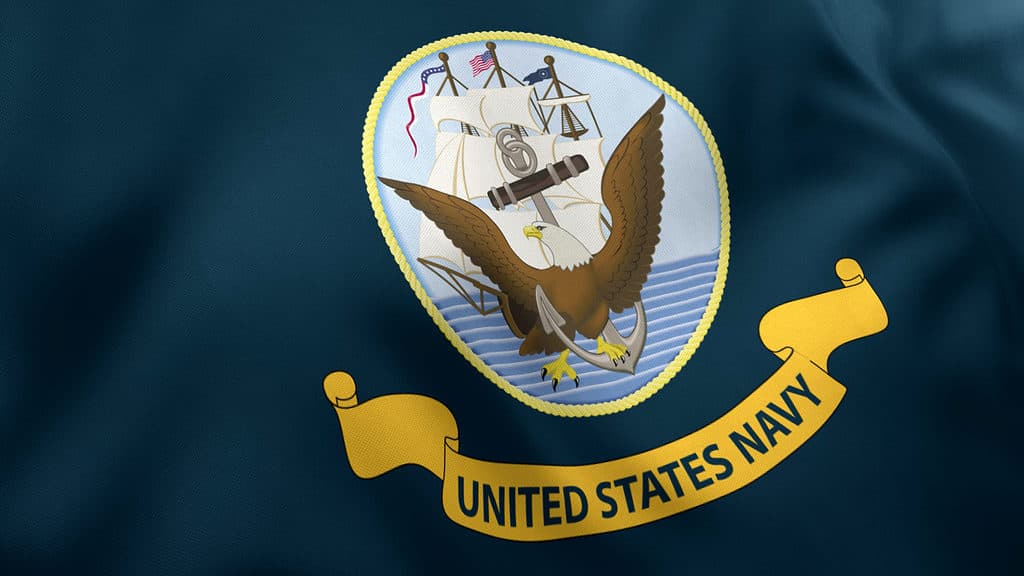
©iStock.com/mirza kadic
U.S. Air Force
The flag of the U.S. Air Force features a blue field with the Air Force’s crest at its center. This crest includes an American bald eagle, a symbol of the United States. The crest also displays a cloud formation, symbolizing the creation of a new firmament, as well as a wreath of silver and blue folds. The shield in the crest is divided by a nebuly line formation (a special line design) representing clouds and bears a heraldic thunderbolt, symbolizing the striking power of the Air Force through the medium of air. Thirteen stars are displayed around the crest, each representing one of the thirteen original colonies that declared their independence from Great Britain in 1776.
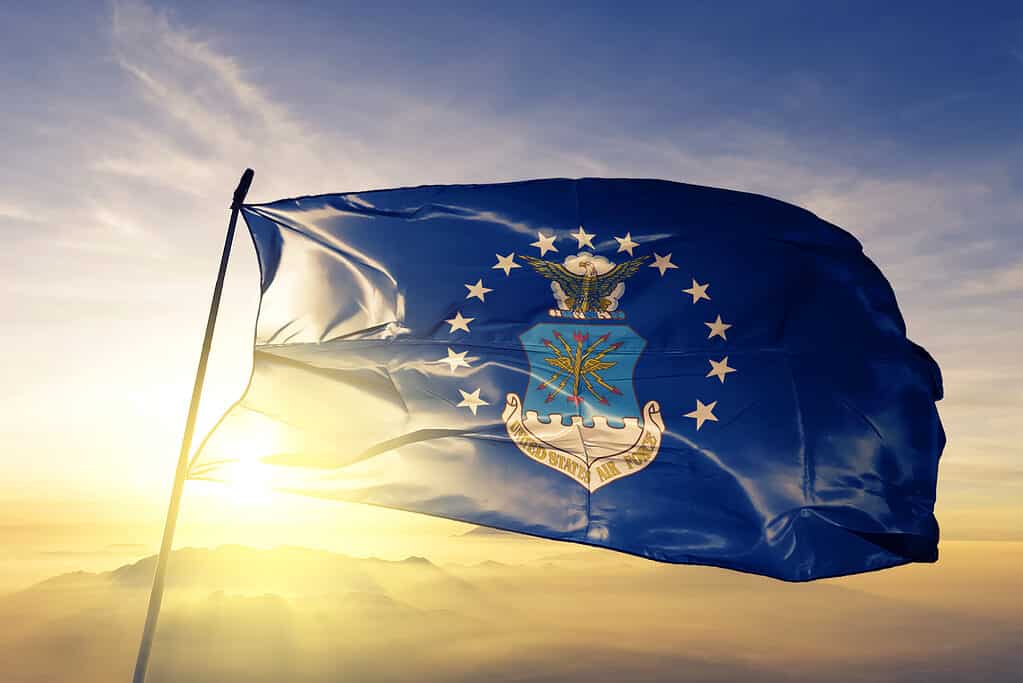
©iStock.com/Oleksii Liskonih
U.S. Space Force
The flag of the U.S. Space Force is a black field with a platinum fringe. The flag is derived from the central and supporting elements of the Space Force seal, which includes a delta wing, globe, elliptical orbit, Polaris star, and star clusters.
These elements symbolize the Space Force’s role in defending the United States and exploring and protecting the space domain. Beneath the central imagery is the text “UNITED STATES SPACE FORCE” and “MMXIX” in white lettering. The text indicates the name and birth year of the service, which was established in 2019, making it the newest of them all.
U.S. Coast Guard
The flag of the U.S. Coast Guard is a white field featuring the U.S. Great Seal in dark blue. The seal includes an eagle with a shield on its breast, which has a blue chief over vertical red and white stripes. The words “UNITED STATES COAST GUARD” are inscribed in an arc above the eagle, while the words “SEMPER PARATUS” (meaning “always ready” in Latin) are displayed below the eagle. The number “1790” is also displayed beneath the eagle as a representation of the year the Coast Guard was established.
The current flag was officially adopted for use on January 28th, 1964, although an ensign flag was used as far back as 1799.
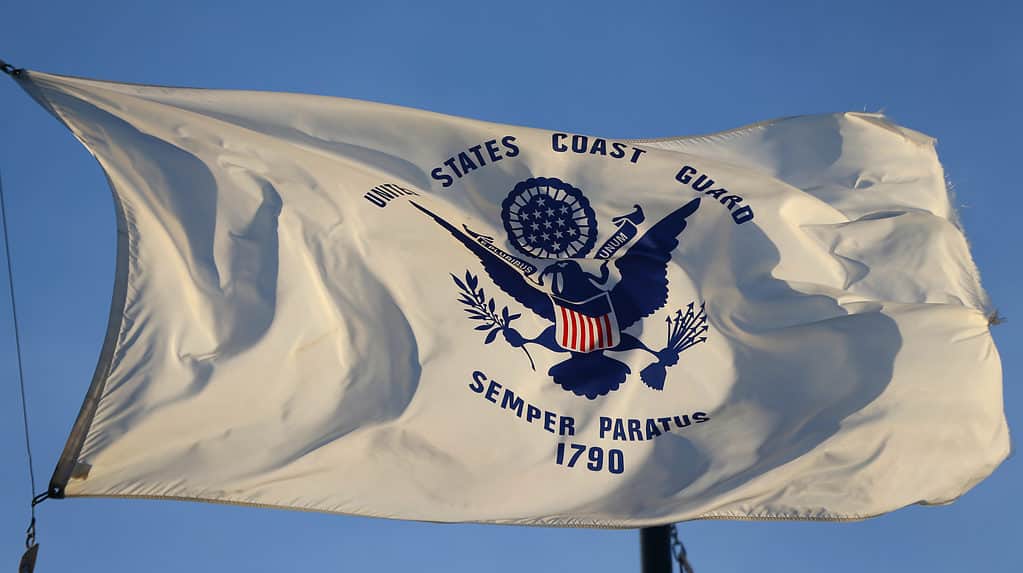
©Leonard Zhukovsky/Shutterstock.com
Conclusion
Each of the flags flown to represent the different service branches of the U.S. military has a unique history and distinct symbolism, although there is a lot that ties them together. Flags are often our way of looking into the past, specifically regarding the origination and representation of certain groups and nations. For each of the flags of the U.S. military, that is most certainly the case!
Up Next
- The Flag of Argentina: History, Meaning, and Symbolism
- The Flag of Peru: History, Meaning, and Symbolism
- The Flag of Alaska: History, Meaning, and Symbolism
The post See The Different US Military Flags appeared first on AZ Animals.
from Animal News, Facts, Rankings, and More! - AZ Animals https://ift.tt/szqThMn